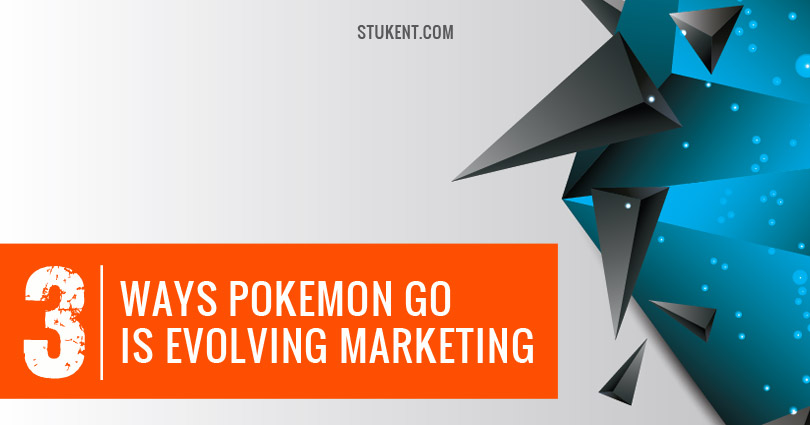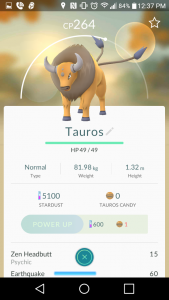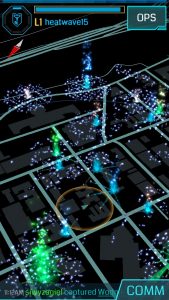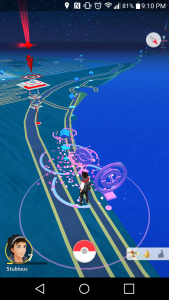It’s been rough in digital marketing recently. But you caught that Tauros in Pokemon Go yesterday, so you’ve got that going for you, right?
Ad-blockers, dead-end fads, and a general immunity to the effects of online advertising have been serious obstacles for marketers, with a few sparkling examples of solid quality online content being the only real thing that has worked to draw consumers to a site or a business consistently. While solid, hard work and high business ethics are still the best way to steadily build your consumer base, there’s a new tool that could give you a little extra boost.
It involves catching fictitious anime-styled creatures from the late 90s.
Yawn and roll your eyes if you want. I know I do it too when I see some of the goofier Pokemon Go articles in my news feed.
But if you’re paying attention, you’re getting a load of real consumer feedback from this relatively silly game. Take a look at this game, and you’ll find that it shows you what consumers really want from their advertisements.
Branding Is Everything
Have you ever heard of Ingress? I hadn’t either before I learned that it was some kind of early predecessor to Pokemon Go, also made by Niantic, that had many of the same features that Pokemon Go does. You can fight to control landmarks, you can get power-ups from local points of interest, and you eventually level up.
Why didn’t that game take off a long time ago? It has a lot of the same gameplay mechanics. It should have been popular, right?
Wrong. Pokemon’s brand is universally recognized, and many people recognize and cherish it from their childhood, connecting the video and card games to happy or exciting memories. That’s why it took off instead of this weird, sterile, abstractly-named prototype that plays almost the same.
Essentially, branding is the reason Pokemon Go isn’t just considered an Ingress app re-skin. We don’t remember Ingress coming first because the Pokemon brand is such a powerful mental connection to happy childhoods past.
Digital Marketing Should Lead to an In-store Experience
In an earlier article about Google’s Adwords and Analytics keynote, I talked about how Google is trying to use Google Maps to promote in-store experiences along the routes people are already traveling. Their goal is to turn an online experience into an in-store experience as fast as possible.
How is Pokemon Go doing that even better?
Pokemon Go’s object is to get you to go to specific locations around your community, called Pokestops, that give players in-game items and supplies that help them catch more Pokemon. From my location in Olympia, WA, I can quickly get to a few key hubs where 50+ Pokemon Go players are congregated at any given time, and it makes a fun date.
The main reason these players group up in these locations so much (the one pictured above is actually the waterfront by the state capitol) is because Pokestops have an option to throw down a 30-minute Pokemon lure that will attract extra Pokemon for everyone within range. In a place with a few Pokestops close together, this turns into a serious game advantage, giving players the resources they need to take down high-level gyms.
So now that you know how to “win” the game, let’s talk about why that’s awesome for marketers.
Any given downtown street has a couple Pokestops on it. Business owners can drive traffic to their area, or even directly to their store if they’re lucky enough to already be a landmark, by paying for a constant lure on their local Pokestop. Essentially, they’re saying, “Want to do well in your game? Come shop in my location.” Some businesses have already started taking advantage of this by paying to have their locations become Pokestops, like what McDonald’s is doing in Japan.
That gives your consumers a direct reason to browse your shop. Every five minutes or so they can use the Pokestop again, so the longer they stay, the more it helps their game. Also, if your in-store experience is good enough, the longer they stay, the more likely they are to buy something.
This begs the question: how will future apps and games use this tool to drive in-store traffic in the future? Gamification is fast becoming a powerful weapon in a marketer’s toolbox.
Quality Content Is Always King
What if Pokemon Go wasn’t branded so well, or wasn’t very fun to play?
Sure, maybe nostalgia is one enormous reason for the explosion of growth, but if the app’s bugs hadn’t been resolved mostly within the first few days, or the server issues hadn’t been dealt with so quickly, what would have happened?
The game would have flopped as so many other mediocre pieces of content do. Pokemon Go is simply a high-quality piece of interactive content that can drive consumers to literally any location that gives them a leg-up on their game. It was well-distributed, it was well-branded, and it was well-maintained after launch. It was reminiscent of previous quality content (namely the Pokemon games, cards, or shows) that resonated with people on a deep level.
These qualities are the reason it has more active users than Twitter, Spotify, and even Netflix.
Duplicating the Pokemon Go Experiment
Pokemon Go is possibly the most powerful piece of interactive content marketing that the world has ever seen, but if the huge influx of articles related to this game is any indication, people are learning how to apply these lessons to other apps in the future.
It’s a race, then, to see who will duplicate or surpass this monumental app achievement first.









